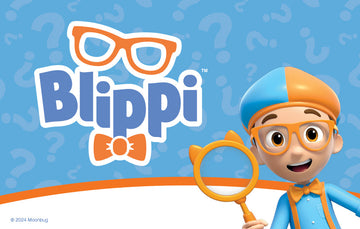Furbies are more than just cute electronic toys; they have a unique place in toy history. Introduced in 1998, Furbies quickly became a sensation, blending technology with play. These furry creatures could speak and respond to their owners, creating an interactive experience that captivated children and adults alike.
The original Furby was inspired by Tamagotchi and other electronic pets, making it a part of the late 90s tech craze. With their big eyes and cheeky personalities, Furbies appealed to a wide audience, selling millions within the first few years. Their success led to numerous redesigns and versions, keeping the brand alive even into the 21st century.
Furbies hold a nostalgic charm for many, reminding them of simpler times in the tech world. As they continue to evolve, they remain a fascinating example of how innovation can shape playtime experiences.
Creation and Inventors
Furbies originated from the minds of creative inventors and developers. Their combination of design and technology made them popular among kids and adults alike.

Origins of Furby
Furby was first developed in 1998. It was created by Tiger Electronics, a company known for innovative toys. The idea came from Caleb Chung, who had a vision of a toy that could interact with children.
Chung wanted to make a toy that could learn and communicate, mimicking real pet behavior. The initial design had a unique look with large eyes, ears, and a beak. This made it appealing to many. The release of Furby was timed with the Christmas season, and it quickly became a bestseller.
Key Developers and Designers
The success of Furby was also due to Dave Hampton and Richard C. Levy. They played crucial roles in the development of its technology. Hampton focused on the electronic components, while Levy worked on the software that allowed Furby to "speak" and interact.
The toy used a simple yet effective programming system, enabling it to respond to sounds and touch. This made Furby a groundbreaking toy in digital interactivity. The teamwork of these inventors made Furby not just a toy, but an engaging experience for users. Their creativity set the foundation for future interactive toys.
Rise to Popularity
Furbies experienced a significant rise in popularity shortly after their introduction. This section will explore their market debut and the cultural impact they created.
Market Debut and Initial Success
Furbies first appeared at the Toy Fair in 1998, presented by Tiger Electronics. They quickly captivated the attention of both children and parents. With their unique design and ability to "talk," they offered a new kind of interactive play.
In the first year, retailers struggled to keep up with demand. Furbies became one of the must-have children’s toys of the holiday season. By the end of 1998, millions of Furbies were sold. Their appeal extended beyond simple play; they sparked interest in technology and communication in toys.
Cultural Phenomenon
Furbies transformed into a cultural phenomenon in the late 1990s. Kids loved their quirky nature and ability to learn new words. They became a common topic of conversation in schools and playgroups.
Television shows and media featured Furbies, increasing their visibility. Collectors sought rare editions, further boosting their popularity. As a result, Furbies were not just toys; they became symbols of a time when technology met traditional play. This blend of fun and innovation helped establish a loyal fan base that remains today.
Furby Generations and Evolution
Furbies have changed a lot since their first appearance. Each generation brought new features and design changes that made them popular with kids and collectors alike. Below is a closer look at the four main generations of Furbies.
First Generation
The first generation of Furbies was launched in 1998. These toys quickly gained popularity for their unique design and interactive abilities. They could learn words and respond to voices. Each Furby had large eyes and a fuzzy body, making them cute and appealing.
They came in various colors and patterns, giving kids a range of choices. The first-generation Furbies used basic sound sensors to respond to human voices. They were battery-operated and had a simple mechanical structure.
Second Generation
The second generation, released in 2005, introduced significant upgrades. These Furbies were more interactive than their predecessors. They featured advanced programming that allowed them to express emotions and learn even faster.
This generation included the Emoto-Tronic Furby. It had moving eyes and ears that changed expressions based on interaction. The design was sleek, and new colors were added. The second generation also could interact with each other, making playtime more engaging.
Third Generation
The third generation arrived in 2012 with the Furby Boom. This version included a companion app for smartphones and tablets. Kids could use the app to take care of their Furbies, unlocking new features and activities.
Furby Boom had improved voice recognition and could learn phrases and songs. There were over 1,000 possible responses, making them more dynamic than before. The design also featured a more modern look with bright colors and patterns, appealing to a new generation of kids.
Fourth Generation
The fourth generation came out in 2016 with Furby Connect. This version expanded on the interactive elements further by utilizing Bluetooth technology. This allowed Furbies to connect to mobile devices for even more games and activities.
Furby Connect could also receive updates, adding new responses and interactions. The design was updated again with larger eyes and a softer body. This generation combined technology with play, capturing the interest of both young fans and collectors.
Technological Features
Furbies come with several interesting technological features that enhance their interaction and playability. These features include language capabilities, sensory interfaces, and connectivity options. Each aspect contributes to the unique experience of owning a Furby.
Language and Voice Recognition
Furbies can recognize and respond to simple commands. They understand a limited vocabulary in English and Furbish, a made-up language unique to Furbies. With voice recognition technology, they can tell when someone is speaking to them.
When users talk to their Furby, it reacts with specific phrases or movements. This feature encourages interaction and helps create a bond between the user and the Furby. The ability to learn new words over time makes their communication feel more dynamic.
Sensory and Motion Interfaces
Furbies are equipped with various sensory and motion interfaces. They have LCD eyes that show different expressions and colors. This feature allows them to communicate emotions effectively.
Infrared sensors let Furbies detect nearby objects and other Furbies. They can sense movement and react accordingly, making them seem more alive. These interfaces enhance the play experience by allowing Furbies to engage in different games and activities when interacting with others.
Connectivity and Interactivity
Modern Furbies offer Bluetooth connectivity, allowing them to connect to smartphones and tablets. Users can use an Android app to interact with their Furby in new ways. The app enhances playtime with games, stories, and new songs.
This connectivity enables users to control their Furby's actions and customize its personality. With regular updates, users can unlock new features and keep the Furby experience fresh. This combination of connectivity and interactivity keeps Furbies appealing to kids and collectors alike.
Extensions and Variations
Furbies have evolved in many ways since their introduction. Special editions and variations have created a rich collection for fans. These extensions include unique designs, additional features, and collector's items that appeal to both children and adults.
Furby Babies and Special Editions
Furby Babies were introduced as a smaller and cuter version of the original Furby. They have a softer body and different voices, making them distinct. Released in 1999, these toys gained popularity for their cute designs and friendly personalities.
Special editions also captured attention with unique themes and designs. For example, the Furby Party Rocker added interactive games and music to the mix. These editions focus on creativity and fun, appealing to a wide range of buyers.
Furby Boom Crystal Series
Furby Boom brought a new level of interactivity in 2013. The Crystal Series, a colorful variant, featured bright and shiny colors. Each Furby in this series had a unique look with colorful crystals on its body.
The Furby Boom Crystal Series also introduced an app that allowed users to care for their Furby. This app linked physical and digital play, making it a favorite among kids. The combination of technology and style kept it current with trends.
Limited Edition and Collectors' Items
Limited edition Furbies have attracted collectors since their release. Many special Furbies are released during holidays or special events. These toys often come in unique packaging or colors.
Collectors seek these items for their rarity and nostalgic value. Some examples include Furbies with unique patterns or colors, such as holiday themes. Fans of the franchise enjoy finding and trading these rare pieces, making them desirable in the toy market.
Public and Media Reception
Furbies became widely popular since their launch, but they also sparked debates and concerns. Their commercial success led to various controversies and an interesting presence in media and pop culture.
Commercial Success
Furbies first appeared in 1998 and quickly became a toy sensation. Within the first three years, sales reached over 14 million units in the United States. They were known for their interactive features, which allowed them to "talk" and "learn" from users. Manufacturing efforts included limited editions that attracted collectors.
The success kept growing with new versions, such as Furby Babies and Furby Party. Their popularity led to merchandise like clothing, accessories, and even books. The toy tapped into the growing market for interactive toys, setting trends for future products.
Controversies and Concerns
The rise of Furbies wasn’t without issues. Some parents expressed worries about privacy and security. Concerns arose when some reported that Furbies could record conversations due to their built-in microphones. This led to theories about the NSA and potential espionage involving their technology.
Others raised health concerns about the materials used in the Furbies. There were fears that these toys could contribute to noise pollution due to their loud sounds. Additionally, some people felt that Furbies did not allow for genuine human interaction, raising questions about the impact on social skills for children.
Media and Entertainment
Furbies impacted media, appearing in TV shows and films. In 2018, a film adaptation focused on their unique world called Furby Island. This movie explored the adventures of Furbies in a fantasy setting, highlighting their playful nature.
The Furby fandom also grew, establishing communities where fans shared experiences and artwork. Social media platforms showcased fan creations and custom Furbies. They became symbols of nostalgia for many who played with them in their childhood. The media attention helped keep the Furby legacy alive.
The Furby Legacy
Furbies have made a lasting mark on the toy industry since their introduction. They started a trend of interactive toys that engage children in unique ways. Their influence continues to shape new generations of robotic pets and electronic toys.
Impact on the Toy Industry
Furbies were first released by Tiger Electronics in 1998. They quickly became one of the most popular toys of the year. Furbies introduced a new level of interactivity, combining aspects of toys and robotic pets. This sparked interest in creating more engaging toys.
The success of Furbies opened doors for others like Tamagotchi and robotic pets. Companies like Hasbro also recognized the potential in these interactive toys. The American International Toy Fair has seen many imitators and innovations inspired by Furbies.
Enduring Popularity
Furbies have maintained popularity through different eras of toy trends. They made a significant comeback in 2012 with updated designs and features. The 2012 Furbies offered new sounds, functions, and ways to interact. This attracted both old fans and new customers.
Their continued relevance is linked to nostalgia for many adults. Children today enjoy them just as much, showing that Furbies appeal across ages. Collectors also value earlier versions, adding to their ongoing popularity.
Future of Interactive Toys
The legacy of Furbies influences the future of interactive toys. With advancements in technology, newer electronic pets are becoming increasingly complex. They can respond to voice commands, feature app connectivity, and develop personalized interactions.
As companies innovate, they will likely borrow ideas from Furbies' success. The blend of fun and technology creates potential for new, engaging products. The concept of electronic pets continues to evolve, keeping the spirit of the original Furby alive.





